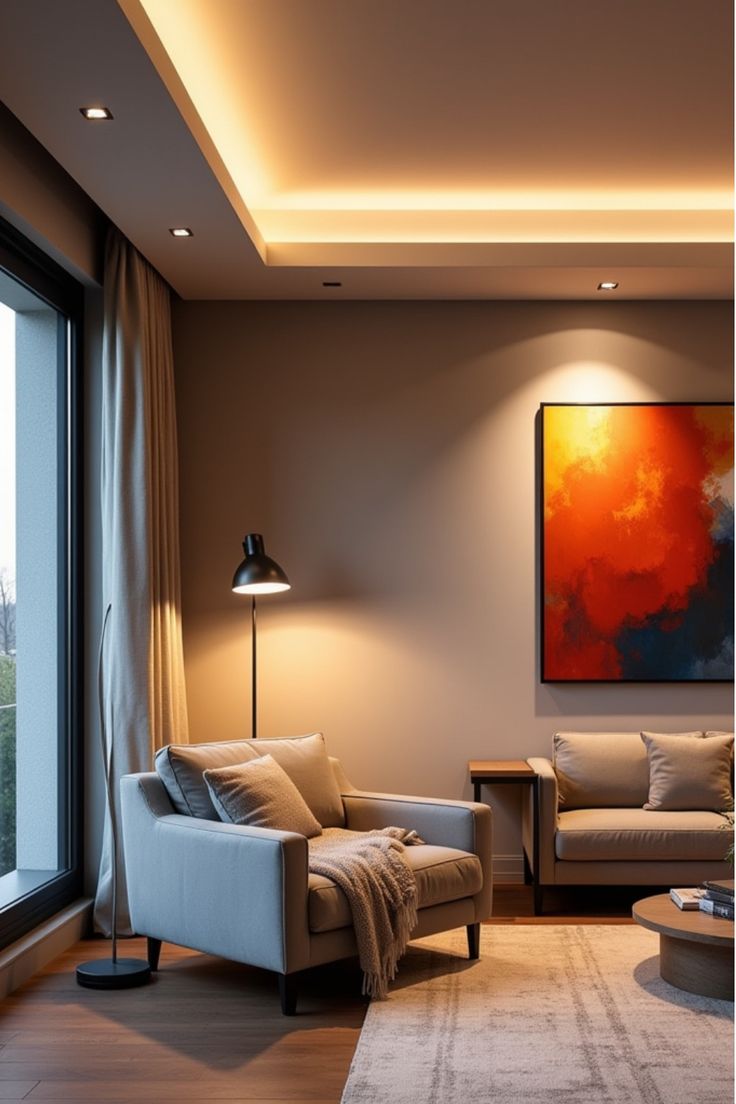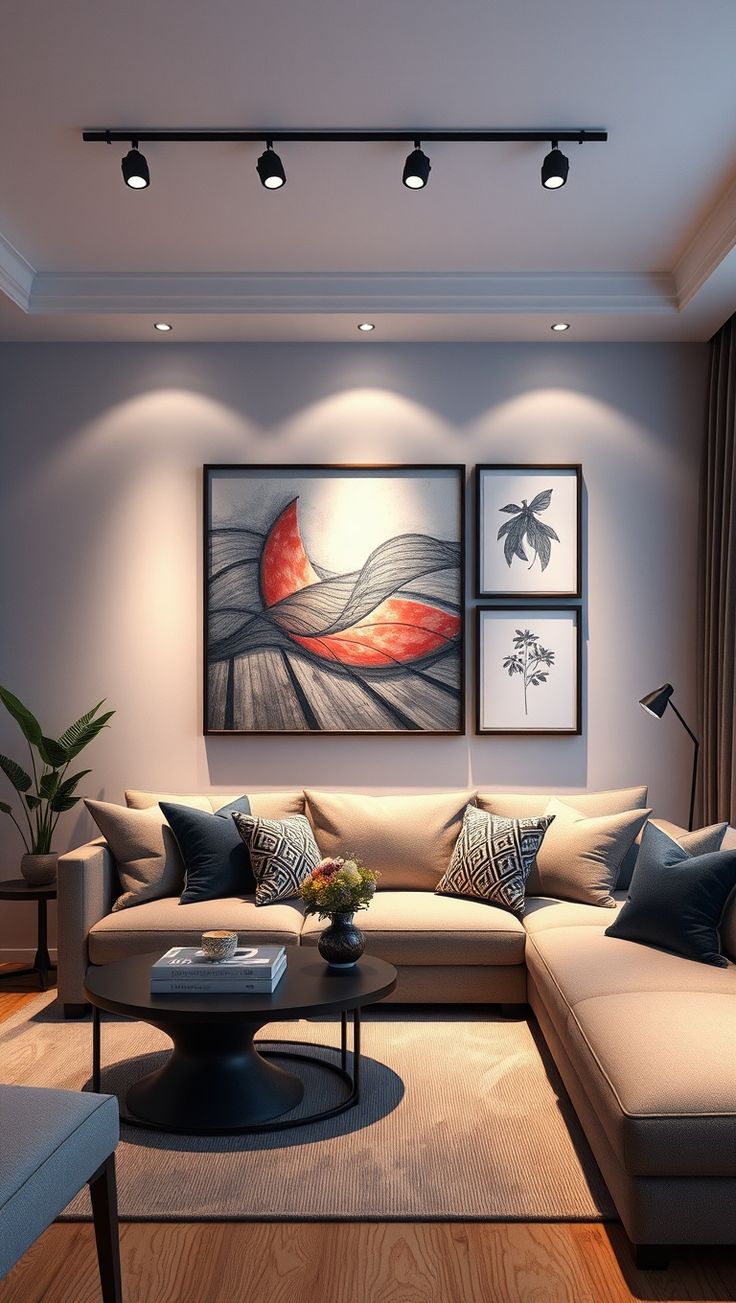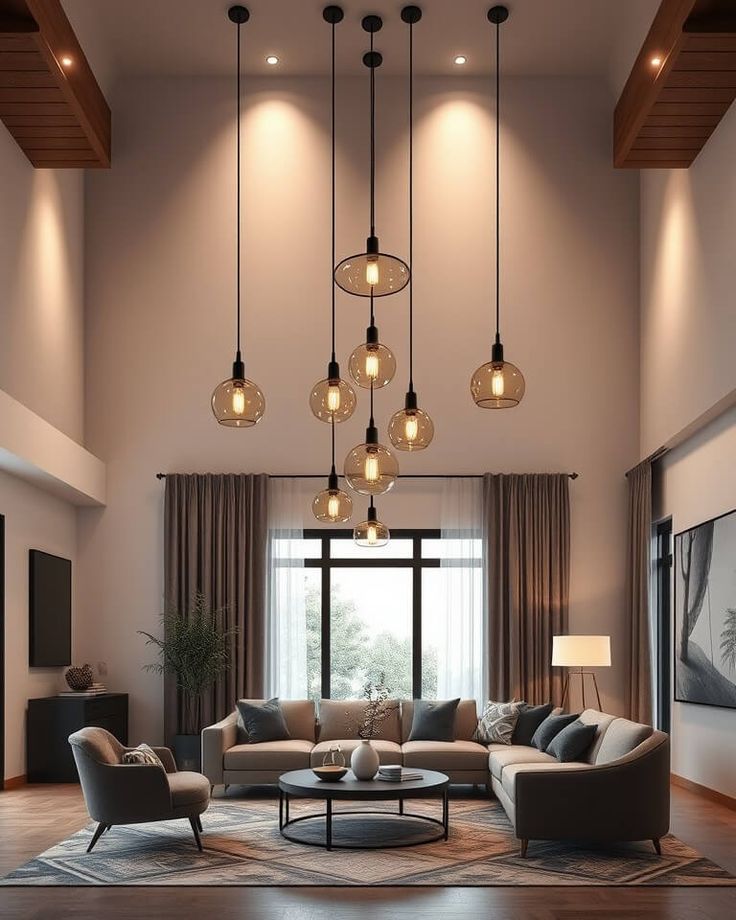
Lighting isn’t just about flipping a switch—it’s an essential part of creating a space that feels right. Whether you’re working, relaxing, entertaining, or doing all three in one day, the right lighting can make your home more comfortable, functional, and beautiful.
That’s where layered lighting design comes in. Instead of relying on one overhead bulb to do everything, layered lighting uses multiple types of light to build depth, highlight features, and set the mood.
At Sierra Contracting, we’ve helped homeowners across Dubai master this approach to lighting. And today, we’re going to show you how to light a room like a pro.
What Is Layered Lighting Design?
Simply put, layered lighting design is the strategic combination of different light sources to enhance how a room looks and feels.
Rather than depending on just one light fixture, you incorporate multiple “layers” of lighting—each with its own job. These layers typically include:
- Ambient lighting (the room’s overall illumination)
- Task lighting (focused light for specific activities)
- Mood lighting (also known as accent or decorative lighting)
Let’s break them down one by one.

Ambient Lighting: The Foundation of Every Room
Ambient lighting is your starting point. This is the main source of light that fills the room and allows you to see everything clearly. Think of it as the base layer of your lighting design.
Common Types of Ambient Lighting
- Ceiling-mounted fixtures (like flush-mount or semi-flush lights)
- Recessed lighting
- Chandeliers or pendant lights
- Wall-mounted sconces
The key with ambient lighting is even distribution. You want to eliminate harsh shadows while ensuring the space feels warm and inviting—not flat or overexposed.
💡 Pro Tip: Use dimmers for ambient lights so you can adjust brightness depending on the time of day or activity.
Task Lighting: Function Meets Focus
Task lighting does exactly what it sounds like: it helps you do things. Whether it’s reading a book, chopping vegetables, or working at your desk, task lighting gives you the concentrated light you need, right where you need it.
Where You Need Task Lighting:
- Kitchen counters (under-cabinet lights)
- Home office desks (desk lamps)
- Bathroom mirrors (vanity lights)
- Reading areas (floor or table lamps)
When installing task lighting, think about function first. What do you actually do in this area? Once you answer that, the right fixture becomes obvious.
💡 Pro Tip: For kitchens, under-cabinet lighting is a must. It provides clean, focused light while keeping shadows off your work area.

Mood Lighting: Style and Atmosphere
Also known as accent lighting, mood lighting is where you get to have some fun. This layer adds personality, drama, and warmth. It’s the difference between a room that looks fine… and one that feels amazing.
Examples of Mood Lighting:
- Wall sconces with warm bulbs
- LED strip lights under furniture
- Candles or faux candle fixtures
- Table lamps with soft shades
- Picture lights that highlight artwork
The goal here is to create visual interest. Mood lighting draws attention to the things you want to showcase and makes a space feel cozy, calm, or even romantic.
💡 Pro Tip: Use mood lighting to highlight textures like exposed brick, a statement headboard, or your favorite plant wall.
How to Layer Lighting Like a Pro
Step 1: Start with a Plan
Before buying fixtures, map out how you’ll use each room. Ask yourself:
- What time of day will I be here most?
- What tasks happen in this space?
- What mood do I want to create?
Step 2: Install Ambient Lighting First
Get your general lighting sorted with ceiling fixtures or recessed lights. This gives you a bright, balanced base.
Step 3: Add Functional Task Lighting
Layer in desk lamps, kitchen lights, or vanity lights where needed. Keep them targeted and practical.
Step 4: Finish with Mood Lighting
This is where the magic happens. Think wall sconces, table lamps, or LED strips with warm tones.
Step 5: Use Dimmers Wherever You Can
Dimmers turn a single light fixture into a dynamic tool. Adjust the brightness to match your needs and mood.

Room-by-Room Lighting Tips
Living Room
- Use a chandelier or pendant for ambient light.
- Add a floor lamp near the couch for reading (task lighting).
- Use wall sconces or table lamps for atmosphere.
Kitchen
- Ceiling lights or track lighting for general light.
- Under-cabinet lights for prep areas.
- Pendants above the island for style and function.
Bedroom
- Overhead lighting or ceiling fan with lights for ambient.
- Bedside table lamps or wall-mounted reading lights.
- Add LED strip lights behind the headboard or under the bed for subtle mood lighting.
Bathroom
- Ceiling light or recessed lights for ambient.
- Vanity lights on either side of the mirror (not just above—it causes shadows).
-
A small sconce or candle-style lamp for spa vibes.
Layered Lighting in Modern Dubai Homes
Many homeowners in Dubai are now moving away from flat, uniform lighting in favor of the flexibility that layered lighting design offers. Whether you’re in a high-rise apartment or a luxury villa, incorporating layers of ambient lighting, task lighting, and mood lighting helps you tailor your space to your exact lifestyle.
If you want to learn more about the different types of lighting in interior design, check out our full guide here:
👉 Types of Lighting in Interior Design
Final Thoughts: Let Your Lighting Tell a Story
Lighting isn’t just about brightness—it’s about balance. It’s about creating a room that works for you at every time of day and sets the tone for whatever you’re doing. Whether you’re hosting a dinner party, relaxing after work, or powering through a late-night task, a smart layered lighting design gives you the flexibility to shift the room’s energy instantly.
At Sierra Contracting, we specialize in helping clients across Dubai create interiors that are both beautiful and functional—starting with lighting that does more than just shine.
Want expert help designing your dream lighting plan? Get in touch today. We’re here to turn your home into a perfectly lit masterpiece.




